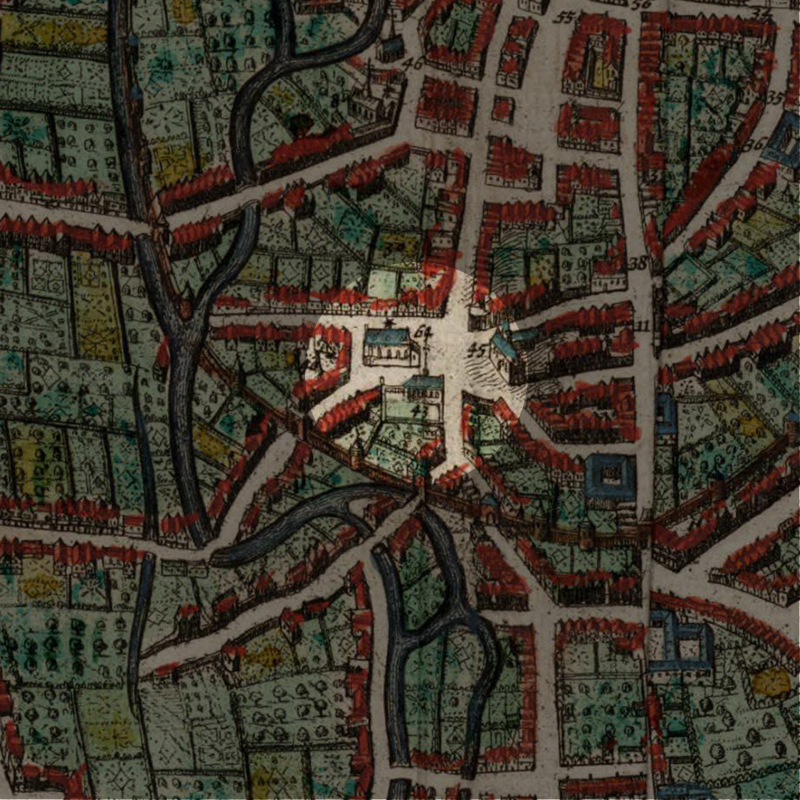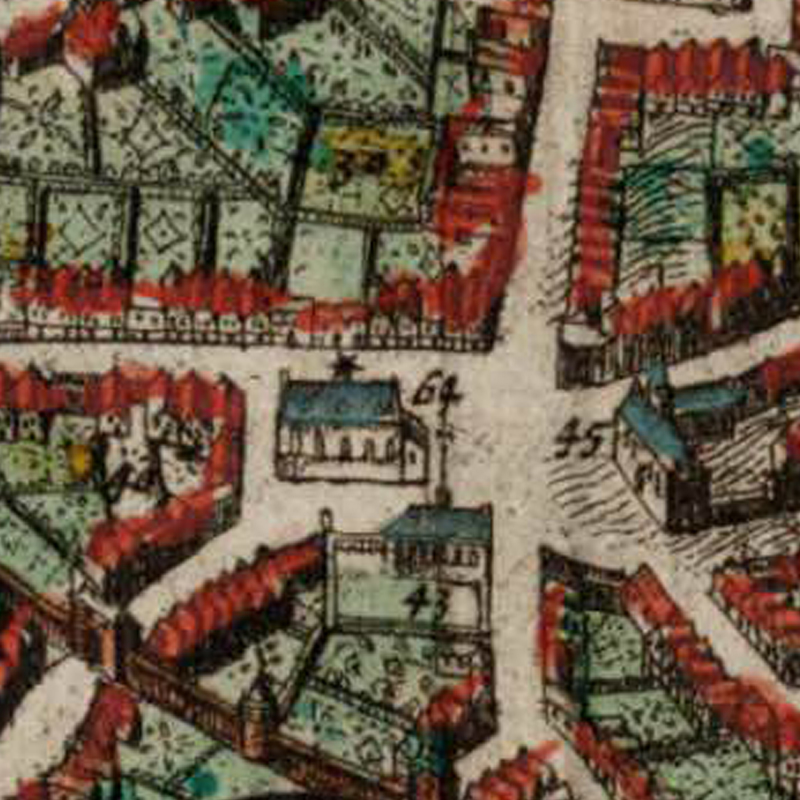ABOUT
Known today as the ‘Pater Damiaanplein’ after the Belgian Saint Damien of Molokai, the square used to be the site of Leuven’s Veemarkt (Cattle Market) back in the Middle Ages.
Origin
The Empty Square that should Never be Built Over
According to Leuven’s 19th-20th century historian Edward van Even, the square where the Veemarkt used to be was already known in the 13th century the ‘Lagere Plaats‘ (Lower Square). This is because the city was divided into upper (where the Naamsestraat is) and lower towns (from Parijsstraat all the way to the end of Schapenstraat), and the Lagere Plaats was the place of gathering for people in the lower town.
Before it became a square, there used to be a wooden grain hall standing here housing Leuven’s first Korenhuis (Grain House).
In 1293, the Duke of Brabant Jan I gave the square to the city, on the condition that it would never be built on. This condition still stands today.
The Korenhuis has since been moved to the Zeelstraat by the Grote Markt.
Because of this condition, the square was also known as the ‘Ledige Plaats’ (Empty Square), and the street leading to it known today as Parijsstraat, was called the ‘Ledigstraat’ (Empty Street).
Not just for cattles
Enterprising people back in the Middle Ages certainly would not leave a square empty. Soon, the Ledige Plaats became the Veemarkt, where cattles were auctioned and sold. Later on, it is also the ‘Varkensmarkt‘ (pig market).
This continued until 1813 when Veemarkt/Varkensmarkt moved to the new Sint-Jacobsplein outside the Sint-Jacobskerk.
Thereafter, people started selling chickens and pots here instead, so the local name for the square became known both as the ‘Kiekenmet‘ (chicken market) and the ‘Pottekesmet‘ (pottery market).
Other sources called it the ‘Sint-Antoniusplaats’ after the chapel.
With the installation of the Pater Damiaan mausoleum in the Sint-Antoniuskapel in 1936, the square was renamed Pater Damiaanplein in the same year.
What's so special about this place?
The Apollokermis Procession
Every 9 February, there used to be a procession called the “Apollokermis” held on the Veemarkt to honour Saint Apollonia. She is the patron saint of dentistry because she had her teeth all pulled out when she was tortured for her beliefs. Originally, the procession was organised inside the Groot Begijnhof nearby, but had to be moved to the Veemarkt because it disturbed the peace and quiet of the beguines.
The Two Saint Anthonys
As explained in detail in the post about the Sint-Antoniuskapel, there are two St Anthonys being worshipped here on the Sint-Anthoniusplaats aka Veemarkt.
The St Anthony worshipped in the Sint-Antoniuskapel is the St Anthony the Great of Egypt. The Black Death in the 14th century led to the veneration of St Anthony the Great, also known as Anthony the Hermit and Anthony of Egypt, the patron saint against the plague. From 1539, there was a yearly procession for the hermit saint, held in January.
The other St Anthony is the St Anthony of Padua (also ‘Anthony of Lisbon’). A Franciscan friar from the 12th-13th century, this St Anthony is honoured above the main entrance of the Irish College, also located on the Veemarkt.
Current situation
Today, the sale of animals and pots stopped decades ago on the Veemarkt. Today, the Pater Damiaanplein is unfortunately an ugly, asphalt-paved square, in spite of its historical significance. This is a great place to enjoy a drink on the pub terraces in the summer, and where you can explore the Sint-Antoniuskapel, the Hollands College and the Irish College. A short walk from the Pater Damiaanplein is the best-preserved and most beautiful beguinage in the Benelux: the Groot Begijnhof of Leuven.
Sources:
https://inventaris.onroerenderfgoed.be/themas/8248
https://wimvist.com/2017/12/01/het-pater-damiaanplein-van-lege-plaats-tot-weggeefplein/
HOW IT LOOKS LIKE TODAY
Click on the zoom icon to view the full size.





